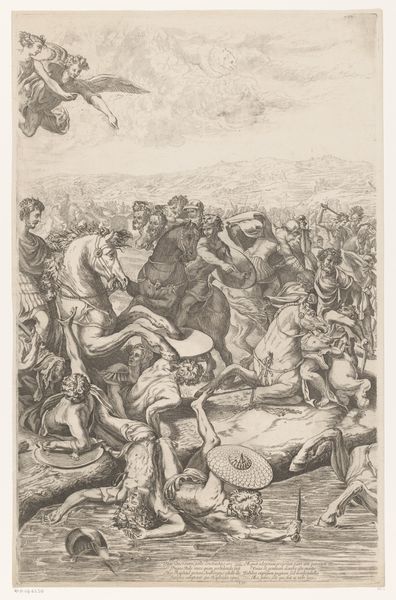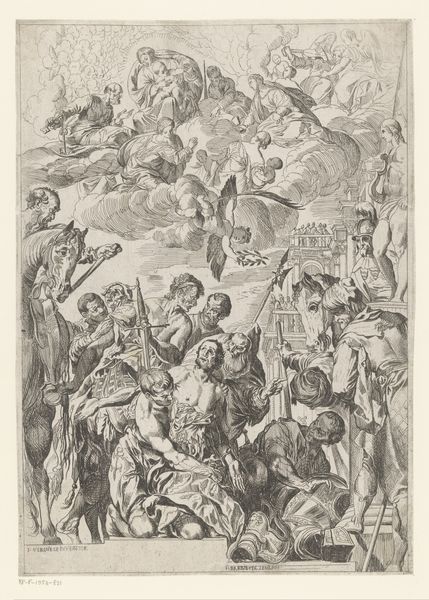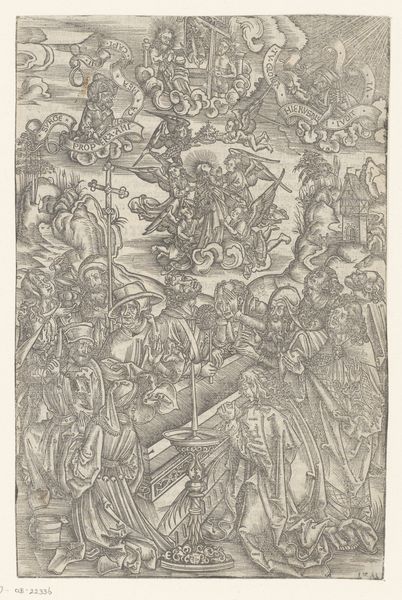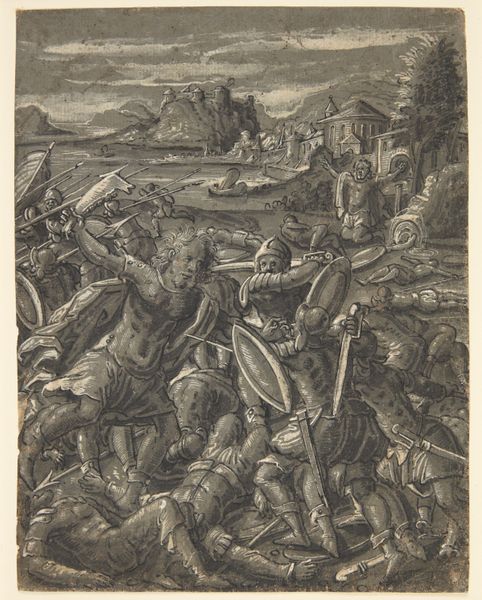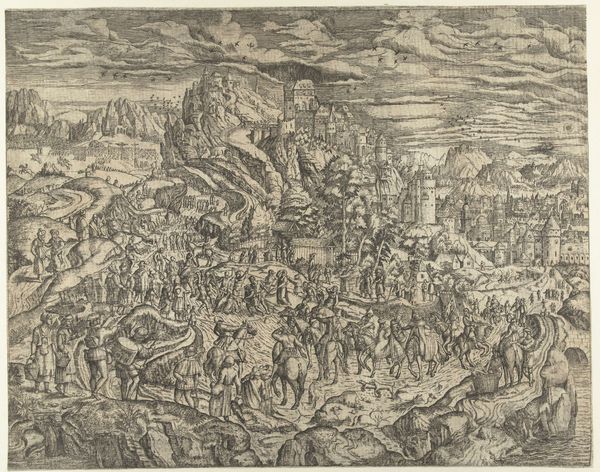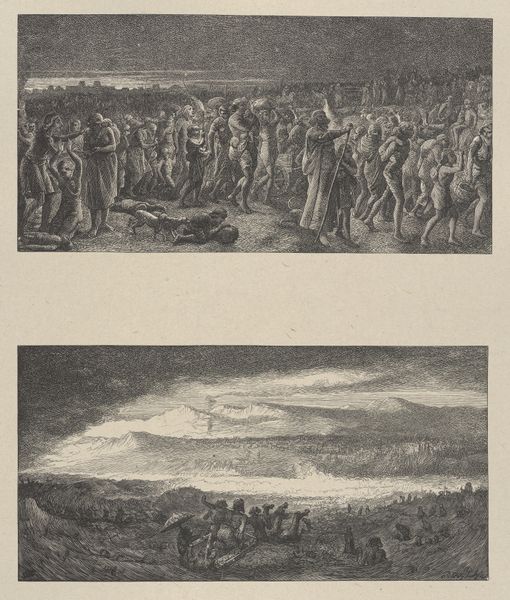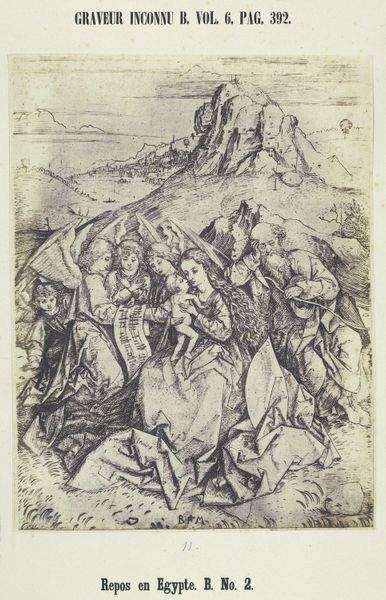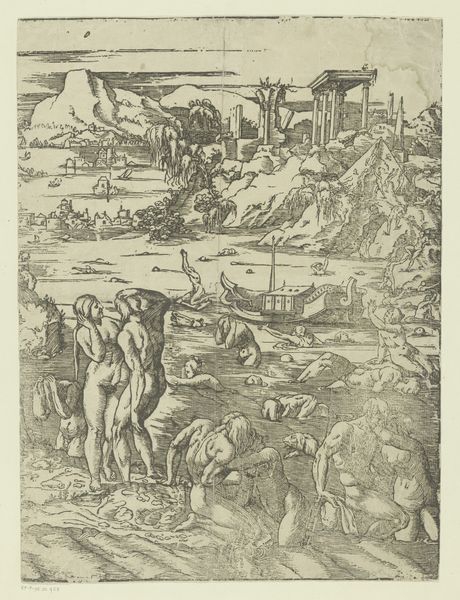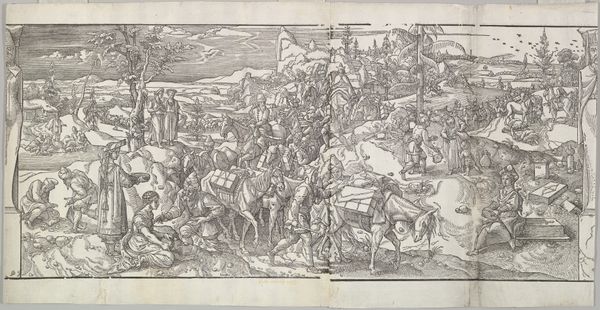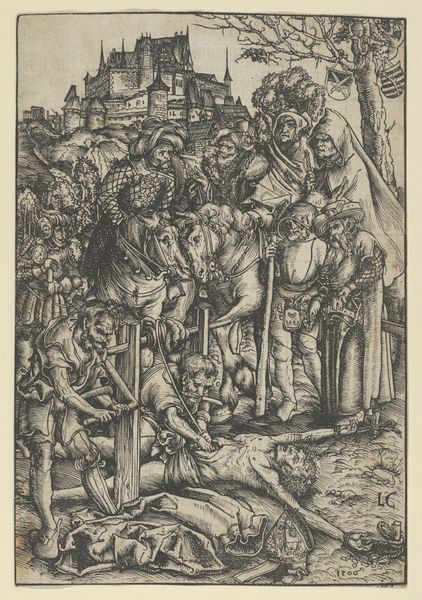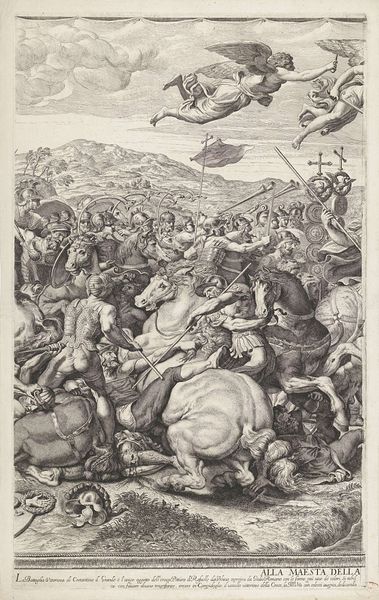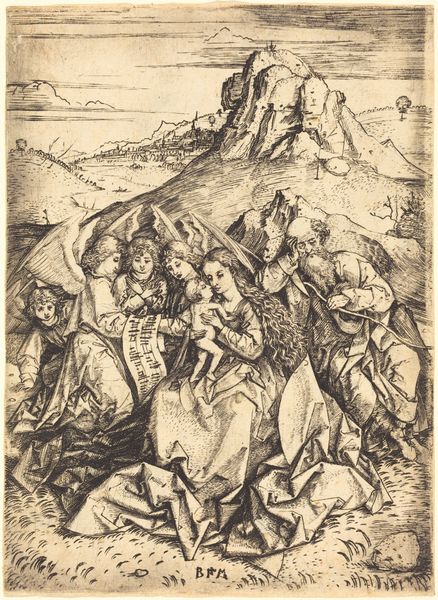
The Crucifixion of Saint Peter, after Michelangelo's frescoes in the Pauline Chapel, Vatican Palace 1550 - 1560
0:00
0:00
drawing, print, etching, engraving
#
drawing
#
allegory
#
narrative-art
# print
#
etching
#
mannerism
#
figuration
#
11_renaissance
#
cross
#
men
#
pen work
#
crucifixion
#
history-painting
#
engraving
Dimensions: Plate: 16 7/16 × 12 3/4 in. (41.8 × 32.4 cm) Sheet: 18 7/16 × 14 1/4 in. (46.8 × 36.2 cm)
Copyright: Public Domain
Michele Lucchese created this engraving of ‘The Crucifixion of Saint Peter’ in the mid-16th century, after Michelangelo’s fresco in the Vatican Palace. The image depicts the apostle Peter's martyrdom, an event laden with religious and political meaning during the Reformation. Consider the visual codes at play here. The reversed crucifixion is a key symbolic element, marking Peter's humility by refusing to die in the same manner as Christ. This choice reflects the Catholic Church's emphasis on humility and sacrifice, virtues often contrasted with the perceived excesses of the Protestant reformers. Made in Italy, where the papacy was a dominant force, the artwork is a reaffirmation of papal authority. Looking at the fresco through the engraving, it's worth considering the role of the institution in shaping artistic production, and the cultural and religious forces at play. To fully appreciate this, we can examine historical documents, theological treatises, and the biographies of the artists involved. The meaning of art is always contingent on its social and institutional context.
Comments
No comments
Be the first to comment and join the conversation on the ultimate creative platform.
